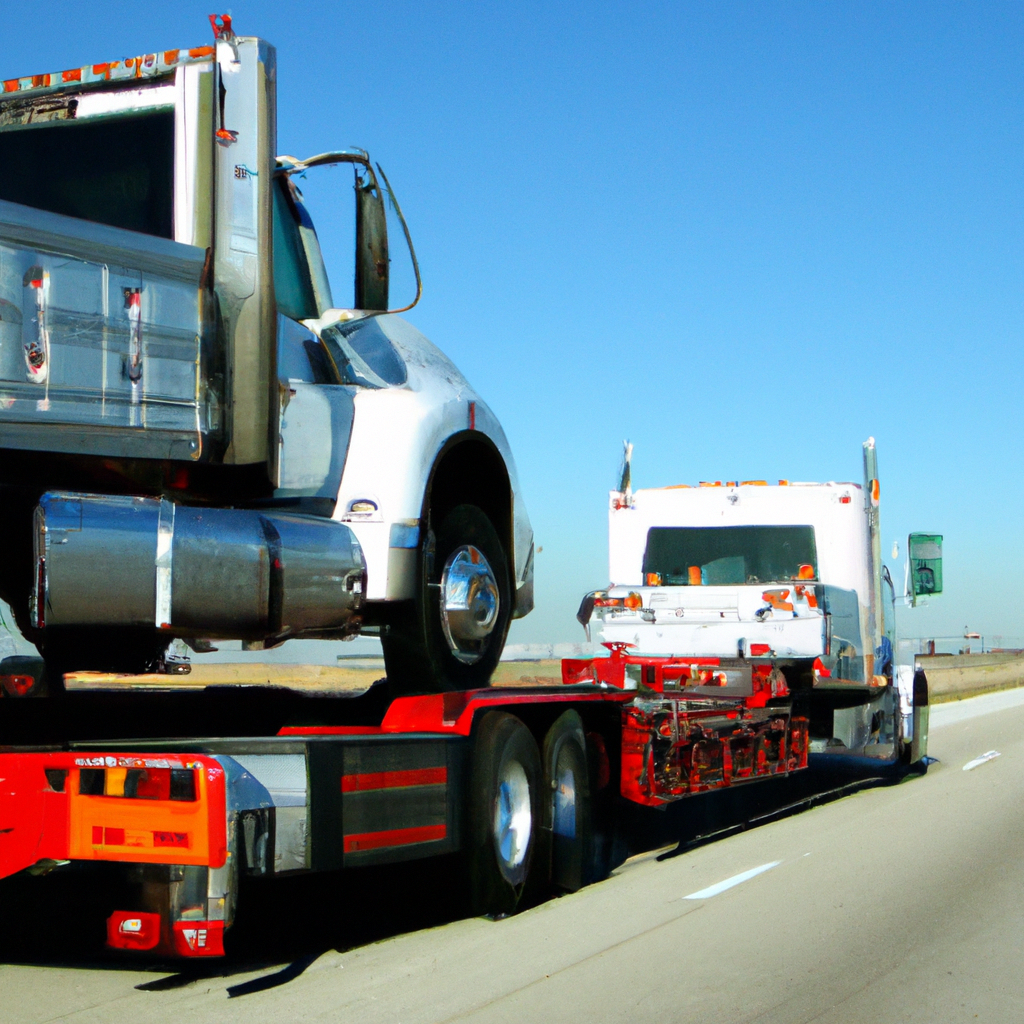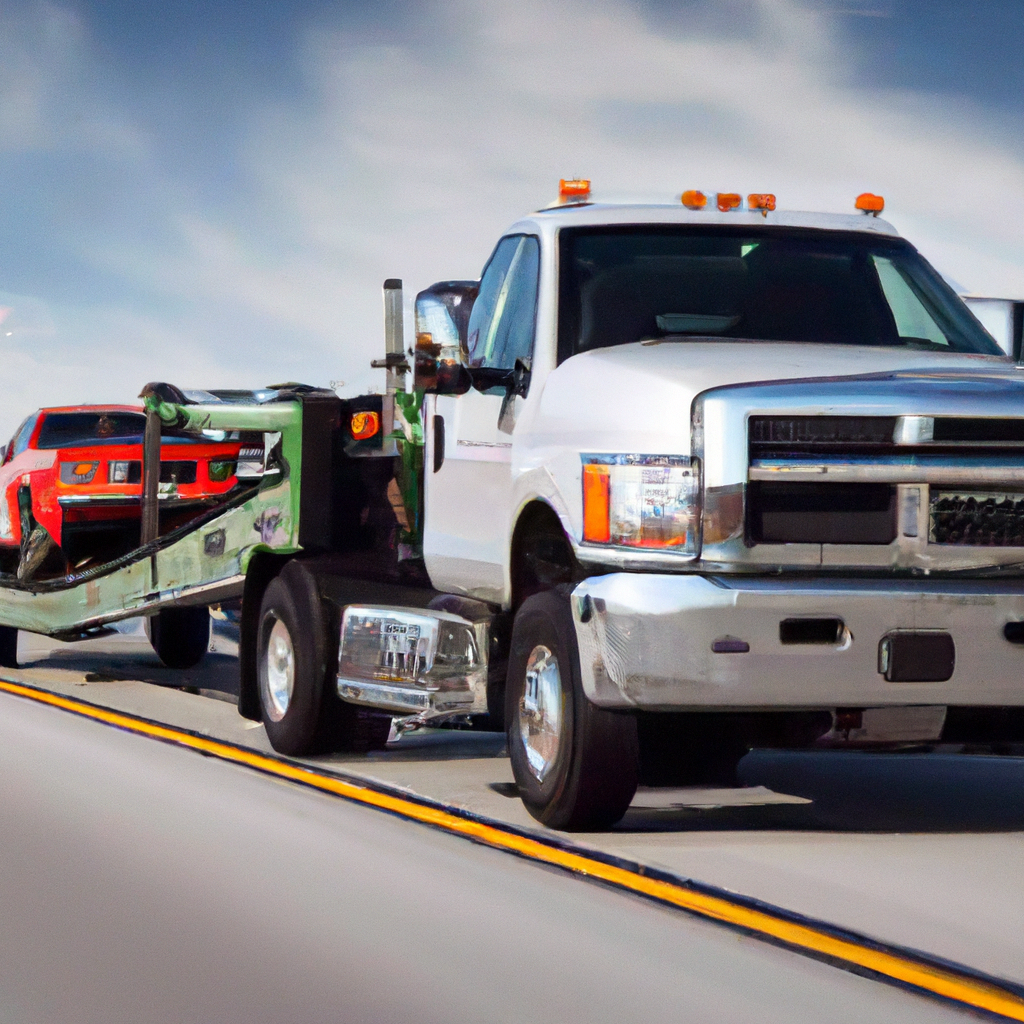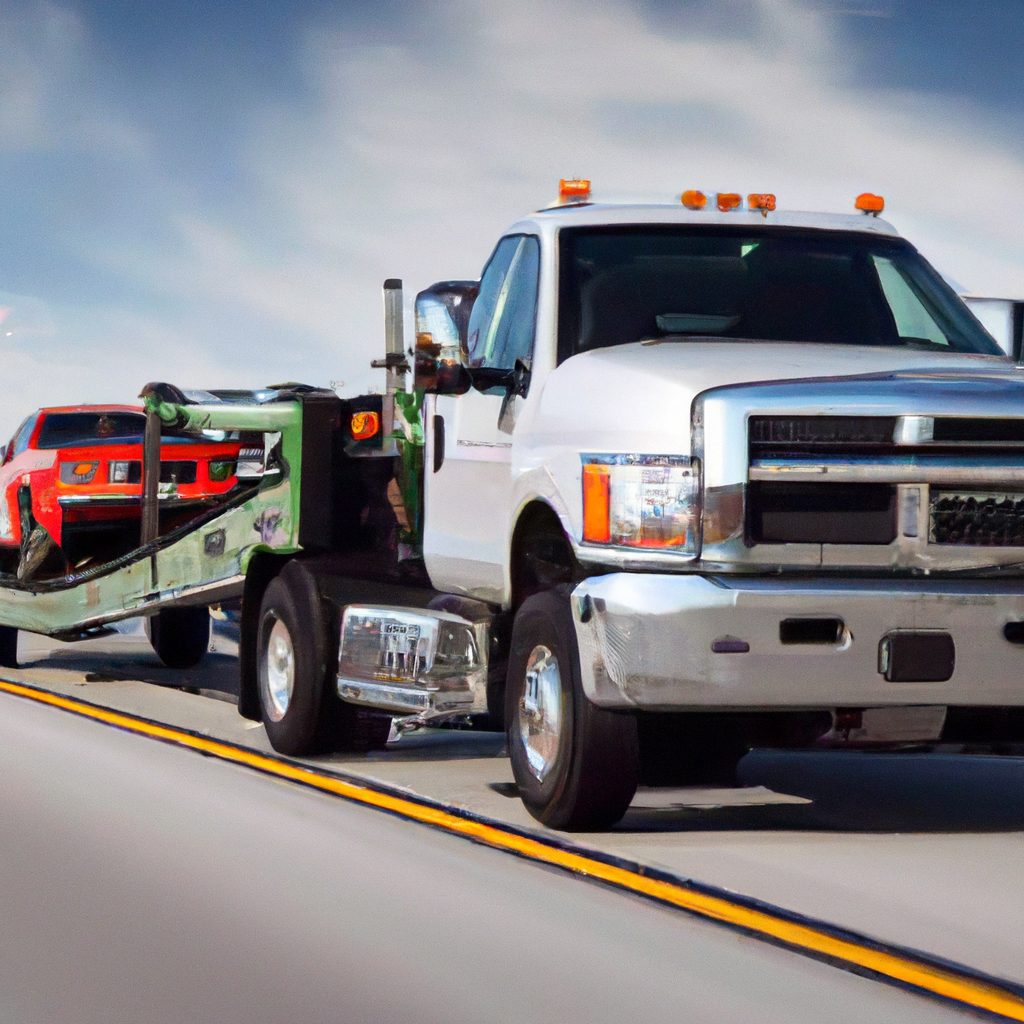When it comes to towing, the question of whether length matters is a topic that often sparks debate. Many factors need to be considered to determine the impact of length on towing safety and performance. In this article, we will examine the potential implications of towing different lengths and explore how it can affect your driving experience. From highway regulations to vehicle capabilities, we will offer valuable insights to help you make informed decisions when it comes to towing with various lengths. So, let’s delve into the complex world of towing and unravel the truth behind the commonly asked question: does length matter when towing?

Factors to Consider
Weight Distribution
When towing, weight distribution is a crucial factor to consider. Uneven weight distribution can lead to instability and make it difficult to control the towed load. It is important to distribute the weight evenly to ensure better handling and stability while on the road. Improper weight distribution can also result in excessive strain on the towing vehicle’s suspension and tires, potentially causing premature wear and decreased performance.
Road Conditions
The condition of the road plays a significant role in towing safety. Uneven or slippery surfaces can make it challenging to maintain control over the towed load. It is essential to consider the road conditions and choose an appropriate towing vehicle that can handle such conditions. This includes factors like traction, ground clearance, and stability control systems, which are crucial for maintaining safe towing practices.
Vehicle Capability
Understanding the capabilities of both the towing vehicle and the towed load is vital to ensure a smooth and safe towing experience. The towing vehicle must have sufficient power and torque to handle the weight of the load. It is important to check the towing capacity specified by the manufacturer and ensure that it aligns with the weight of the load you intend to tow. Additionally, considering factors such as the vehicle’s suspension, transmission, and cooling system can help determine its suitability for towing.
Legal Requirements
Federal Regulations
Towing regulations are governed by both federal and state laws. Federal regulations provide a basic framework for towing practices, including requirements for vehicle equipment such as hitches, lighting, and brakes. Familiarizing yourself with these regulations is essential to ensure compliance and maximize safety during towing.
State Regulations
In addition to federal regulations, each state may have its own specific towing laws. These regulations may vary in terms of maximum towing speed, specific equipment requirements, and licensing requirements. It is important to research and understand the towing regulations in your state to ensure that you are in compliance with all legal requirements.
Safety Considerations
Stopping Distance
Towing significantly increases the vehicle’s weight, affecting its ability to stop quickly. It is essential to consider the increased stopping distance required when towing a load. The added weight increases the momentum of the vehicle, making it more challenging to slow down or come to a complete stop. Allowing for a longer stopping distance is crucial and can help prevent accidents and ensure the safety of both the towing vehicle and other road users.
Turning Radius
Towing a load affects the vehicle’s maneuverability, particularly the turning radius. The length and weight of the towed load can impact the ability to make sharp turns safely. It is important to be aware of the increased turning radius and plan turns accordingly. Failing to account for the extended length of the towed load when turning can result in collisions or damage to both the towing vehicle and the load being towed.
Stability
Maintaining stability while towing is essential for safe operation. A stable towing setup minimizes the risk of swaying, fishtailing, or jackknifing, which can lead to accidents. Factors such as weight distribution, proper hitching, and appropriate suspension settings contribute to stability. Ensuring that the towing vehicle and the load are properly balanced and secure can significantly enhance stability during towing.
Effect on Fuel Efficiency
Aerodynamic Drag
When towing a load, the aerodynamic drag increases due to the added bulk and resistance of the load. A larger, bulkier load can create additional drag, resulting in decreased fuel efficiency. The shape and size of the towed load, as well as its positioning, play a significant role in determining the level of aerodynamic drag experienced. It is important to consider the impact of aerodynamic drag on fuel consumption and plan accordingly to mitigate any negative effects.
Fuel Consumption
Towing adds a considerable load to the towing vehicle’s engine, resulting in increased fuel consumption. The added weight increases the demand for power, causing the engine to work harder and consume more fuel. It is essential to be prepared for higher fuel consumption when towing and consider factors such as the load weight, distance to be traveled, and driving conditions. Monitoring fuel levels and planning refueling stops accordingly can help ensure a smooth and uninterrupted tow.

Types of Towing
Trailers
Using a trailer for towing is one of the most common methods. Trailers come in various sizes and have different weight capacities depending on the towing requirements. They are typically attached to the towing vehicle through a hitch. Trailers provide a versatile and convenient way to tow different types of loads, such as recreational vehicles, boats, and utility trailers.
Fifth Wheel
Fifth-wheel towing involves a specialized hitch configuration that connects the trailer to the towing vehicle’s bed. This setup provides enhanced stability and maneuverability compared to traditional trailer towing. Fifth-wheel towing is commonly used for larger trailers such as RVs and campers.
Gooseneck
Gooseneck towing utilizes a hitch that is mounted in the bed of a truck, similar to the fifth-wheel setup. However, gooseneck hitches have a different design and attach to the trailer using a ball hitch rather than a fifth-wheel connection. Gooseneck towing offers increased stability and weight-carrying capacity, making it suitable for heavy-duty towing, such as horse trailers and livestock haulers.
Choosing the Right Vehicle
Towing Capacity
The towing capacity of a vehicle is an essential factor to consider when choosing a suitable towing vehicle. Towing capacity refers to the maximum weight a vehicle can safely and effectively tow. Exceeding the towing capacity can put excessive strain on the vehicle’s engine, transmission, and other components, leading to potential reliability issues and safety risks. It is crucial to select a vehicle with a sufficient towing capacity to handle the intended load.
Wheelbase Length
The length of the wheelbase, the distance between the front and rear axles of a vehicle, plays a significant role in towing stability. A longer wheelbase provides more stability and better weight distribution, reducing the chances of swaying or fishtailing. When choosing a towing vehicle, consider opting for a longer wheelbase to improve towing stability and control.
Braking System
Having an appropriate braking system is crucial when towing heavy loads. Towing places additional strain on the vehicle’s brakes, and inadequate braking capabilities can lead to accidents and compromised safety. Vehicles equipped with trailer brake controllers and additional braking systems, such as electric or hydraulic brakes, can significantly improve braking performance while towing. It is recommended to select a towing vehicle with a robust braking system to ensure safe and reliable towing.
Impact on Maneuverability
Backing Up
Towing a load can make backing up more challenging and require additional skill. The extended length and increased weight can affect the responsiveness and maneuverability of the towing vehicle. It is important to practice and familiarize yourself with how the towed load reacts while backing up. Taking extra caution, using mirrors effectively, and having someone assist you during backing maneuvers can help overcome the challenges associated with towing in reverse.
Parallel Parking
Parallel parking with a towed load can be more challenging due to the increased length and limited maneuverability of the overall setup. Making tight turns and navigating into tight parking spaces may require extra care and skill. It is essential to consider the increased length and turning radius of the towed load while parallel parking and give yourself ample space to maneuver safely.
Effect on Driving Experience
Acceleration
Towing a load can significantly impact the acceleration and overall performance of the towing vehicle. The additional weight places increased demands on the engine, resulting in reduced acceleration capabilities. It is important to adjust your driving habits and allow for more time and distance when accelerating with a towed load. Being patient and mindful of the increased load on the vehicle’s engine can help maintain a smooth and consistent driving experience.
Braking
Towing a load affects the braking performance of the towing vehicle. The added weight increases the stopping distance required and may necessitate applying the brakes more firmly and for longer durations. It is crucial to anticipate the increased braking distance and adjust your driving accordingly. Keeping a safe following distance and allowing for extra time to brake can help ensure a safe and controlled braking experience.
Cornering
Towing a load impacts the handling and stability of the towing vehicle during cornering. The added weight introduces more momentum, increasing the force exerted on the tires. It is important to approach corners and curves with caution and reduce your speed to maintain control. Being aware of the extended turning radius and taking wider turns as necessary can help navigate corners safely while towing.
Maintenance Considerations
Tire Wear
Towing heavy loads puts additional strain on the tires of the towing vehicle. The weight distribution, road conditions, and driving habits can all contribute to increased tire wear. It is essential to regularly inspect tires for signs of wear or damage, maintain proper tire pressure, and ensure that the load is adequately balanced. Additionally, rotating the tires regularly and replacing them when necessary can help prolong their lifespan and maximize towing safety.
Suspension Wear
Towing places increased stress on the suspension components of the towing vehicle. The additional weight can cause suspension components to wear more quickly, potentially leading to decreased handling and stability. Regular inspections of suspension components, including shocks, springs, and bushings, can help identify any signs of wear or damage. Maintaining a well-maintained suspension system is crucial for safe and comfortable towing.
Road Safety Tips for Towing
Maintain Proper Speed
When towing, it is important to adhere to the posted speed limits and maintain a safe and appropriate speed for the road conditions. Towing can impact the vehicle’s handling and braking capabilities, so driving at a reasonable speed helps ensure safe operation and minimizes the risk of accidents.
Avoid Sudden Lane Changes
Towing a load affects the vehicle’s maneuverability and responsiveness. It is essential to plan your lane changes in advance, using turn signals and checking your surroundings for other vehicles. Avoid sudden lane changes or abrupt maneuvers that can destabilize the towed load and compromise safety.
In conclusion, when it comes to towing, several factors need to be considered to ensure safety, compliance with regulations, and a smooth driving experience. Weight distribution, road conditions, and vehicle capabilities play a significant role in determining the suitability of a towing setup. Understanding legal requirements, such as federal and state regulations, is crucial for compliance. Safety considerations encompass stopping distance, turning radius, and stability, all of which impact towing safety. Towing also affects fuel efficiency, with aerodynamic drag and fuel consumption being important factors to consider. Different types of towing, such as trailers, fifth wheels, and goosenecks, offer varying capabilities. Choosing the right vehicle involves assessing towing capacity, wheelbase length, and braking systems. Towing also impacts maneuverability, affecting tasks such as backing up and parallel parking. Driving with a towed load requires adjustments to acceleration, braking, and cornering techniques. Regular maintenance, including tire wear and suspension components, is vital for safe towing. Following road safety tips, such as maintaining proper speed and avoiding sudden lane changes, can help ensure a safe towing experience. By considering these factors and taking appropriate precautions, you can enjoy the benefits of towing while prioritizing safety and compliance.
